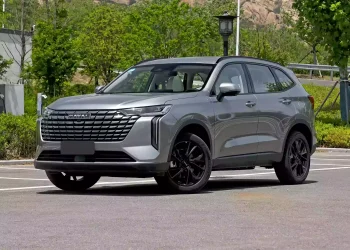Financing a car in South Africa can be complex, but understanding your options helps you make smarter decisions. Here’s a quick overview of what you need to know:
- Financing Options:
- Bank Loans: Lower interest with secured loans but stricter approval processes.
- Dealership Financing: Convenient but often higher interest rates.
- Leasing: Lower monthly payments but no ownership unless you buy at the end.
- Balloon Payments: Smaller monthly installments but a large lump sum at the end.
- Key Tips:
- Follow the 20/4/10 rule: 20% down payment, 4 years max loan term, and car costs under 10% of your gross income.
- Improve your credit score to secure better terms.
- Compare multiple loan offers and focus on the APR (not just the interest rate).
- Review loan agreements carefully for hidden fees or penalties.
- Trends in 2025:
- Interest rates vary based on creditworthiness. Secured loans offer better rates.
- Used cars are in demand, and financing for electric vehicles is growing.
- Insurance costs are rising, so budget for comprehensive or gap insurance.
Bottom Line: Plan ahead, compare options, and review all costs to avoid financial strain. Whether you’re buying or leasing, preparing properly ensures a smoother process.
Car Finance South Africa: Your Step-by-Step Guide + Pros & Cons
Car Financing Options Available to You
When it comes to financing a car in South Africa, there’s no one-size-fits-all solution. Each option comes with its own set of pros and cons, so understanding them can help you make the best decision for your needs. Let’s dive into the most common financing methods.
Bank Loans
Bank loans are a go-to option for many car buyers. These loans are offered as either secured or unsecured. A secured loan uses the car as collateral, which usually means lower interest rates. Unsecured loans, on the other hand, don’t require collateral but often come with higher rates.
Banks typically provide flexible repayment terms, but keep in mind that longer terms could mean paying more in interest over time. Your interest rate will depend on factors like your credit score, income, and the amount you’re borrowing. Banks also offer both fixed and variable interest rates. Fixed rates give you predictable monthly payments, while variable rates fluctuate with market trends. The process involves standard paperwork, and approvals usually take about a week.
Dealership Financing
If convenience is a priority, dealership financing might appeal to you. Many dealerships work with multiple financial institutions, making it easier to secure financing – especially if your credit history isn’t perfect. In many cases, you can arrange financing on the same day you pick out your car.
Dealerships often bundle financing with special promotions, like reduced rates on specific models for qualified buyers. However, this convenience can come at a cost. Interest rates through dealerships are generally higher than those from banks, and additional fees or extras can inflate the total cost. While approvals are quicker – sometimes within a couple of days – the terms may not be as flexible. It’s important to weigh the ease of dealership financing against its potential long-term expenses.
Leasing vs. Buying
Leasing is an option worth considering, particularly for business owners who might benefit from tax advantages. Leasing essentially allows you to rent the car for a set period, usually a few years, with the choice to buy it at the end of the lease term.
Monthly lease payments are often lower than loan payments because you’re only covering the car’s depreciation rather than its full price. Many lease agreements also include maintenance plans, which can save you from unexpected repair costs. However, leasing comes with some restrictions. You won’t own the car unless you decide to purchase it later, and you’ll need to stick to mileage limits (usually 9,000 to 12,000 miles per year) to avoid extra charges. Plus, the car must be kept in good condition to avoid penalties for excessive wear and tear.
Balloon Payment Plans
Balloon payment plans are designed to lower your monthly payments by deferring a large portion of the loan to the end of the term. This final payment, often called a "balloon payment", significantly reduces the monthly financial burden during the loan period.
While this setup makes monthly payments more manageable, it comes with the challenge of a hefty final payment. At the end of the term, you’ll need to either pay the lump sum, refinance the remaining balance, or sell the car to cover the cost. If the car’s value depreciates faster than expected, you could end up owing more than the vehicle’s worth. This option is best for buyers who are confident they’ll have the funds to handle the balloon payment or who plan to trade in the car before the term ends.
How to Get the Best Car Financing Deal
Landing the best car financing deal takes preparation and smart shopping. A well-negotiated deal can save you thousands over the life of your loan. Here’s how to get started.
Calculate Your Budget
Before diving into car shopping, it’s crucial to figure out what you can realistically afford. A good rule of thumb is the 20/4/10 rule: aim for a 20% down payment, keep the loan term to 4 years or less, and ensure your total monthly vehicle costs don’t exceed 10% of your gross monthly income.
For example, if you earn $5,000 a month, your total car expenses – including insurance, fuel, maintenance, and registration – should stay under $500. If those additional costs add up to $200, your loan payment should be no more than $300.
You’ll also want to calculate your debt-to-income ratio. Most lenders prefer this ratio to stay below 36% for all combined debts. If you already have existing monthly payments, subtract those from your available budget to see how much room you have for a car payment.
Don’t forget about upfront costs like registration fees and insurance deposits. Factoring in these expenses early will help you avoid surprises down the road. A clear budget gives you the confidence to negotiate the best deal.
Improve Your Credit Score
Your credit score plays a huge role in determining your interest rate. Even small improvements can lead to noticeable savings over the life of your loan.
Start by checking your credit report from major credit bureaus to identify any errors, such as incorrect payment histories or accounts that don’t belong to you. Disputing and fixing these mistakes can quickly boost your score.
Paying down existing debt, especially credit card balances, can also make a big difference. Keeping your credit utilization below 30% of your available credit limit is key, though aiming for less than 10% can improve your score even more.
Be cautious about applying for new credit in the months leading up to your car purchase. Each inquiry can temporarily lower your score. That said, multiple auto loan applications within a short 14-45 day window are typically treated as a single inquiry, so you can shop around without major impact.
Lastly, set up automatic payments for your current bills to avoid late payments. Since payment history is the largest factor in your credit score, staying consistent here is essential.
Compare Loan Offers
Shopping around for financing is one of the smartest ways to save money. Interest rates can vary widely between lenders, and even a small difference can add up over time.
Get pre-approval from at least three sources, such as banks, credit unions, and online lenders. Pre-approval not only gives you a clear idea of your options but also strengthens your position when negotiating with dealerships.
When comparing offers, don’t just focus on the interest rate – look at the Annual Percentage Rate (APR), which includes both the interest rate and additional fees. Here’s an example of how loan terms can affect your total costs:
| Loan Amount | Interest Rate | Term | Monthly Payment | Total Interest Paid |
|---|---|---|---|---|
| $20,000 | 8% | 4 years | $488 | $3,424 |
| $20,000 | 8% | 6 years | $351 | $5,272 |
| $20,000 | 12% | 4 years | $526 | $5,248 |
| $20,000 | 12% | 6 years | $383 | $7,568 |
In this example, choosing a 4-year loan at 8% saves nearly $4,000 in interest compared to a 6-year loan at 12%.
Beyond interest rates, look for hidden costs like origination fees, early payment penalties, or required insurance policies. These can significantly affect your total loan cost, so factor them into your decision.
Read Loan Agreements Carefully
Before signing anything, take the time to thoroughly review the loan agreement. Understanding the terms upfront can save you from unexpected costs later.
One key detail is whether the loan has a fixed or variable interest rate. Fixed rates remain the same throughout the loan term, making it easier to budget. Variable rates, on the other hand, can fluctuate with market conditions, potentially increasing your payments over time. In uncertain economic times, fixed rates often provide more stability.
Check for early payment penalties, which some lenders charge if you pay off the loan ahead of schedule. These fees can offset the savings you’d otherwise gain from paying less interest. If you plan to make extra payments or refinance later, make sure the loan allows it without penalties.
Be aware of insurance requirements, as some lenders may require comprehensive coverage or gap insurance, especially for new cars. These requirements can add significantly to your monthly costs, so include them in your budget.
Also, review the terms around default and repossession policies. Some agreements consider missing payments as default, but others might include clauses about maintaining insurance or notifying the lender of address changes. Knowing these details can help you avoid accidental violations that might jeopardize your loan.
Finally, if you’re using a co-signer, ensure the agreement clearly outlines their obligations. Understand how they can be released from the loan and how their credit could be affected if you face payment difficulties. This protects both you and your co-signer from future complications.
Mistakes to Avoid When Financing a Car
Balloon Payment Risks
Balloon payment plans might seem appealing due to their lower monthly payments, but they come with some serious downsides you need to consider:
- The final lump-sum payment can be a heavy financial strain if you haven’t prepared for it properly.
- Interest builds on the entire loan amount, including the deferred portion, which means you’ll end up paying more in interest overall.
- If the car’s value drops below the balloon payment amount, you could face negative equity. This makes it harder to sell or trade in the vehicle.
- Refinancing the balloon payment might not be an option if your credit score or market conditions aren’t favorable.
These plans can also tempt buyers to stretch their budgets too far. While the monthly payments may look manageable, failing to prepare for the final payment could lead to repossession, credit score damage, and serious financial stress.
sbb-itb-09752ea
The Car Financing Application Process
Once you’ve compared your financing options, the next step is to complete your application accurately and without delay. Securing approval for car financing involves several steps, and being organized with the right documents can make the process smoother.
Documents You Need
Having all the necessary paperwork ready in advance can save time and prevent potential setbacks.
You’ll need a valid South African identity card, green barcoded ID, or Smart ID. A copy of both sides of your valid South African driver’s license is also required. To confirm your address, provide a utility bill or similar document issued within the past three months. Alternatively, a rental agreement or account statement that includes your address will suffice.
Income verification depends on your employment type. If you’re a salaried employee, you’ll need payslips from the past three months, though some lenders may accept just the most recent one. For self-employed individuals or those earning on commission, additional documents such as your latest annual Financial Statements or Income Tax Return may be required. In some cases, lenders might also ask for up to six months of bank statements to confirm consistent income.
Bank statements from the last three months are typically needed to demonstrate steady cash flow and stable employment. Certain financial institutions, like Al Baraka Bank, may require extra forms for non-salaried applicants, such as a signed statement of personal Income and Expenditure and a statement of personal Assets and Liabilities. (If you’re married in community of property, these documents should reflect both names.)
While having all the required paperwork can speed up the approval process, the final decision hinges on your credit history and affordability. For example, if you’re an FNB customer applying for WesBank vehicle finance, you may not need to provide all the standard documents. It’s always a good idea to check with your bank for any shortcuts or specific requirements. Once your documents are ready, your application can move through the system more efficiently.
Application and Approval Times
Once everything is in order, approval times can vary depending on the lender. Traditional banks often conduct detailed reviews of your credit and affordability, which may take longer. On the other hand, some dealership financing options may offer quicker decisions. Regardless of the method you choose, ensuring your documentation is complete and accurate can help speed things up. Keep in mind that your credit score and overall financial situation play a big role in how quickly your application is approved.
Using Trusted Platforms
Many lenders now provide secure online application options, allowing you to upload documents and track your application’s status. When applying online, make sure to use well-established and trustworthy platforms. Communicating directly with lenders through these platforms can help clarify requirements and make the financing process more efficient.
Car Financing Trends in 2025
The South African car financing landscape continues to shift as economic factors and market dynamics influence how consumers approach vehicle purchases. By staying informed about these trends, you can make smarter decisions when it comes to financing your next car.
Interest Rate Changes
Interest rates play a huge role in determining your monthly payments and overall financing costs. Central bank policies, such as changes to the repo rate, directly impact the prime rate that banks use to set car financing rates. When the repo rate rises, banks typically follow suit, which increases costs – especially for borrowers with lower credit scores.
Though interest rates have stabilized after recent fluctuations, your personal rate will still depend on your credit profile and the lender’s assessment of risk. Borrowers with strong credit scores can secure rates closer to the prime rate, while those with weaker credit may face higher charges.
Secured car loans, where the vehicle serves as collateral, are now offering better rates compared to unsecured personal loans. This makes traditional car financing a more appealing option for many buyers.
Car Market Changes
Shifts in the South African automotive market are influencing financing options and vehicle values. New vehicle sales have shown resilience despite economic challenges, with more buyers relying on financing to manage rising car prices.
Demand for used cars, particularly those in the 3-5 year range, remains strong. This trend has helped stabilize residual values, which benefits buyers considering balloon payment options and lessees. Higher residual values translate to lower monthly payments on leases and better trade-in deals when upgrading.
Electric and hybrid vehicles are slowly gaining ground, though they still make up a small percentage of total sales. Some lenders now offer preferential rates for these environmentally friendly vehicles, thanks to growing interest and government incentives aimed at promoting cleaner transportation.
In the commercial sector, vehicle financing activity is on the rise as businesses adapt to evolving logistics needs. Financing structures in this segment often differ, with established businesses enjoying access to competitive rates.
Import/export dynamics are also shaping the market. Improved supply chains have stabilized inventory levels after recent shortages, giving buyers more options and potentially more bargaining power at dealerships.
Insurance Requirements
As vehicle prices climb and financing terms evolve, insurance costs have become an increasingly important part of the equation. Comprehensive insurance remains mandatory for financed vehicles, and lenders often require proof of coverage before approving loans. Additionally, many lenders now monitor policies to ensure they remain active throughout the loan term.
Insurance premiums have risen, so it’s important to include these costs in your budget. The type of car you choose also affects insurance rates – luxury cars, high-performance models, and vehicles with higher theft risks typically come with higher premiums.
Insurtech is shaking up the insurance industry, introducing usage-based policies and telematics that can lower costs for safer drivers. Some insurers even bundle financing and insurance into one package, simplifying the process for consumers.
Gap insurance has become more relevant as vehicle values fluctuate. This coverage protects you if your car is totaled and the insurance payout doesn’t cover your remaining loan balance. While not always required, it’s often recommended for new car buyers who make minimal down payments.
Credit life insurance is another consideration. Some lenders include basic coverage in their financing offers, while others provide it as an optional add-on. It’s worth reviewing these options to ensure you have adequate protection in case your circumstances change.
Finally, the claims process has become more efficient thanks to digital platforms. Faster claims processing can help reduce financial strain after an accident or theft, which is especially important when you’re still paying off a loan on a damaged or stolen vehicle.
Conclusion: Make Smart Financing Choices
Financing a car requires thoughtful planning to avoid expensive mistakes. Begin by setting a realistic budget – following the 20/4/10 rule can provide a solid foundation for your strategy. Work on improving your credit by paying bills on time, lowering outstanding debts, and regularly checking your credit report to secure better loan terms.
Take the time to compare offers from different lenders. Interest rates, fees, and terms can vary widely, so shopping around is crucial. Always request a detailed breakdown of all costs, including fees for services like registration and licensing, and compare them against official government rates to ensure you’re not overpaying.
Be cautious of hidden costs and balloon payment agreements. Many buyers focus too much on low monthly payments, overlooking the total cost of ownership or the large lump sum due at the end of balloon payment plans. Carefully review all agreements to identify any unexpected expenses or risks.
As the car financing market evolves, staying informed is more important than ever. Shifting interest rates, changing market conditions, and updated insurance requirements can all impact your options. Keep in mind that comprehensive insurance is mandatory for financed vehicles, so include this expense in your budget.
Whether you opt for a bank loan, dealership financing, or leasing, make sure you’re well-prepared. Gather your documentation in advance, thoroughly review the terms and conditions, and take the time to compare your options. Select the financing plan that best suits your financial situation and long-term goals.
FAQs
What are the advantages and disadvantages of using a balloon payment for car financing in South Africa?
A balloon payment plan can make financing a car more manageable in the short term by reducing your monthly payments. This setup allows you to enjoy driving a newer car sooner by deferring a significant portion of the loan into a single, large payment at the end of the term.
That said, the final lump sum payment can be a hurdle if you’re not financially ready. You might have to refinance or sell the car to cover the cost, which could bring added fees or complications. It’s crucial to plan ahead and ensure you’re prepared for that final payment to avoid unnecessary financial strain.
What steps can I take to improve my credit score for better car financing in South Africa?
Improving your credit score can make it easier to secure better financing terms when buying a car in South Africa. To get started, focus on paying your bills on time and working to lower any outstanding debt. Aim to keep your credit utilization below 30% of your total available credit. It’s also a good idea to regularly check your credit report for any errors or inaccuracies and resolve them as soon as possible.
Another key step is building a strong credit history. Use your current credit accounts responsibly and try to avoid opening multiple new accounts at once, as this can lower your score temporarily. In South Africa, credit scores typically range from 0 to 999, with a score of 610 being considered good. If your score is above 700, you’re more likely to qualify for loans with the best terms.
What should I think about when deciding whether to lease or buy a car in South Africa?
When choosing between leasing and buying a car in South Africa, it’s important to weigh your budget, driving habits, and future plans. Leasing can be appealing if you prefer lower monthly payments and the convenience of having maintenance and insurance included. Plus, it’s a great option if you like upgrading to a new car every few years. That said, leasing comes with mileage limits and doesn’t let you build ownership equity.
Buying, on the other hand, might be the better choice if you’re planning to keep the car for the long haul. While the upfront costs are higher and depreciation is a factor, you’ll have full ownership and no mileage restrictions. Ultimately, your decision should reflect your financial situation, how often you drive, and whether you prioritize flexibility or owning your vehicle outright.
Related Blog Posts
- Where to buy safe used cars in South Africa
- Avoid scams when buying used cars in SA
- How to Get the Best Finance Deal When Buying a Car in SA
- Car Buying Traps to Avoid in South Africa





